- BETTING TIPS
- BETTING TIPS NAVIGATIONS
 Premier League
Premier League FA Cup
FA Cup League Cup
League Cup La Liga
La Liga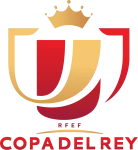 Copa del Rey
Copa del Rey Super Cup
Super Cup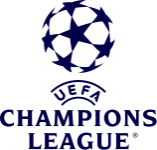 Champions League
Champions League Europa League
Europa League Europa Conference League
Europa Conference League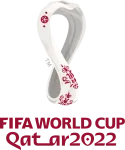 World Cup
World Cup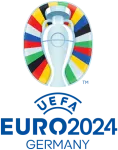 Euro Championship
Euro Championship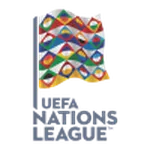 Nations League
Nations League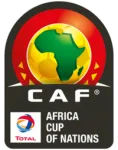 Africa Cup of Nations
Africa Cup of Nations Copa America
Copa America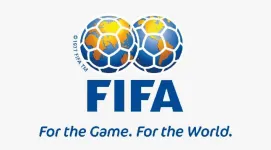 International Friendly
International Friendly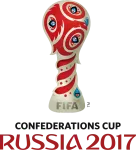 Confederations Cup
Confederations Cup Serie A
Serie A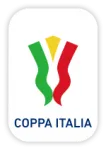 Coppa Italia
Coppa Italia Super Cup
Super Cup Bundesliga
Bundesliga Ligue 1
Ligue 1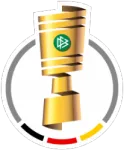 DFB Pokal
DFB Pokal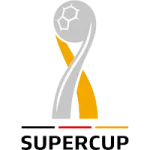 Super Cup
Super Cup Malaysia Super League
Malaysia Super League Coupe de France
Coupe de France Trophée des Champions
Trophée des Champions Pro League
Pro League
- Teams
- TEAMS NAVIGATIONS
 Premier League
Premier League FA Cup
FA Cup League Cup
League Cup La Liga
La Liga Copa del Rey
Copa del Rey Super Cup
Super Cup Champions League
Champions League Europa League
Europa League Europa Conference League
Europa Conference League World Cup
World Cup Euro Championship
Euro Championship Nations League
Nations League Africa Cup of Nations
Africa Cup of Nations Copa America
Copa America International Friendly
International Friendly Confederations Cup
Confederations Cup Serie A
Serie A Coppa Italia
Coppa Italia Super Cup
Super Cup Bundesliga
Bundesliga Ligue 1
Ligue 1 DFB Pokal
DFB Pokal Super Cup
Super Cup Malaysia Super League
Malaysia Super League Coupe de France
Coupe de France Trophée des Champions
Trophée des Champions Pro League
Pro League
- Fixtures & Results
- Fixtures & Results NAVIGATIONS
 Premier League
Premier League FA Cup
FA Cup League Cup
League Cup La Liga
La Liga Copa del Rey
Copa del Rey Super Cup
Super Cup Champions League
Champions League Europa League
Europa League Europa Conference League
Europa Conference League World Cup
World Cup Euro Championship
Euro Championship Nations League
Nations League Africa Cup of Nations
Africa Cup of Nations Copa America
Copa America International Friendly
International Friendly Confederations Cup
Confederations Cup Serie A
Serie A Coppa Italia
Coppa Italia Super Cup
Super Cup Bundesliga
Bundesliga Ligue 1
Ligue 1 DFB Pokal
DFB Pokal Super Cup
Super Cup Malaysia Super League
Malaysia Super League Coupe de France
Coupe de France Trophée des Champions
Trophée des Champions Pro League
Pro League
- Tables
- Tables NAVIGATIONS
 Premier League
Premier League FA Cup
FA Cup League Cup
League Cup La Liga
La Liga Copa del Rey
Copa del Rey Super Cup
Super Cup Champions League
Champions League Europa League
Europa League Europa Conference League
Europa Conference League World Cup
World Cup Euro Championship
Euro Championship Nations League
Nations League Africa Cup of Nations
Africa Cup of Nations Copa America
Copa America International Friendly
International Friendly Confederations Cup
Confederations Cup Serie A
Serie A Coppa Italia
Coppa Italia Super Cup
Super Cup Bundesliga
Bundesliga Ligue 1
Ligue 1 DFB Pokal
DFB Pokal Super Cup
Super Cup Malaysia Super League
Malaysia Super League Coupe de France
Coupe de France Trophée des Champions
Trophée des Champions Pro League
Pro League
- News
- News NAVIGATIONS
 Premier League
Premier League FA Cup
FA Cup League Cup
League Cup La Liga
La Liga Copa del Rey
Copa del Rey Super Cup
Super Cup Champions League
Champions League Europa League
Europa League Europa Conference League
Europa Conference League World Cup
World Cup Euro Championship
Euro Championship Nations League
Nations League Africa Cup of Nations
Africa Cup of Nations Copa America
Copa America International Friendly
International Friendly Confederations Cup
Confederations Cup Serie A
Serie A Coppa Italia
Coppa Italia Super Cup
Super Cup Bundesliga
Bundesliga Ligue 1
Ligue 1 DFB Pokal
DFB Pokal Super Cup
Super Cup Malaysia Super League
Malaysia Super League Coupe de France
Coupe de France Trophée des Champions
Trophée des Champions Pro League
Pro League
- Live ScoresLive
Slovenia
Slovenia| Country | : | Slovenia |
| League | : | |
| Founded | : | 1920 |
| Venue | : | Stadion Z'dežele |
| Coach | : | Tine Kavcic (Slovenia) |
Venue
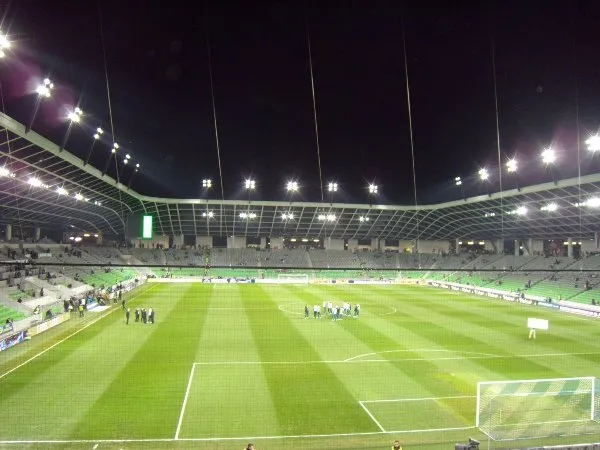
Stadion Z'dežele
| City | : | Celje |
| Capacity | : | 13,059 |
| Surface | : | Grass |
The Slovenia national football team represents Slovenia in international football and has established itself as a competitive side in European and global football since the country’s independence in 1991. Although Slovenia is a relatively small nation, their football team has made significant progress, regularly competing in major international tournaments and producing world-class talent.
History of Slovenia National Football Team
Slovenia was part of Yugoslavia until it gained independence in 1991. After independence, the Slovenia national football team was established, and they began competing in international tournaments. Initially, the team struggled to make a significant impact, but by the late 1990s and early 2000s, Slovenia began to make its mark in European football.
Slovenia’s first major international success came in 2000 when they qualified for the UEFA European Championship. The country’s footballing breakthrough came in 2002 when they qualified for the FIFA World Cup for the first time, although they were eliminated in the group stages. Their major breakthrough on the world stage occurred in 2010 when Slovenia qualified for the FIFA World Cup in South Africa, reaching the group stages and showcasing their competitive edge.
Match Predictions
- Tamworth vs. Leyton Orient Predictions & Betting Tips on Nov 04 - 03:30 AM
- Sunderland vs. Everton Predictions & Betting Tips on Nov 04 - 04:00 AM
- Tottenham vs. Manchester United Predictions & Betting Tips on Nov 08 - 20:30 PM
- Everton vs. Fulham Predictions & Betting Tips on Nov 08 - 23:00 PM
- West Ham vs. Burnley Predictions & Betting Tips on Nov 08 - 23:00 PM
Major Achievements
Slovenia may be a small nation, but its football team has had notable achievements in international competitions. Some of the most significant milestones include:
- FIFA World Cup: Slovenia’s most successful World Cup campaign came in 2010, when they qualified for the tournament in South Africa. They managed to earn a point against the United States and narrowly lost to England and Algeria. Despite not advancing to the knockout stages, Slovenia’s participation in the World Cup was a historic achievement for the country.
- UEFA European Championship: Slovenia has qualified for the UEFA European Championship on two occasions: 2000 and 2016. Their first appearance in 2000 was a significant achievement, as they competed against top European teams. In 2016, Slovenia reached the Round of 16, showcasing their growth as a footballing nation.
- UEFA Nations League: Slovenia has also participated in the UEFA Nations League, where they have faced teams such as Norway, Serbia, and Montenegro in competitive matches. Their performance in the Nations League has shown Slovenia’s steady progress in international football.
These achievements mark significant milestones in Slovenia's footballing journey and reflect the nation’s continued ambition to make an impact on the international stage.
Legendary Players of Slovenia
Slovenia has produced a number of talented footballers who have had successful careers both at the club level and with the national team. Some of the most iconic players in Slovenian football history have become legends in their own right, both in Slovenia and internationally.
- Samir Handanović: Arguably Slovenia’s greatest footballing talent, Handanović is one of the top goalkeepers in Europe. A long-time captain of Inter Milan, Handanović has been known for his incredible shot-stopping ability, leadership, and consistency at the club level. He is widely regarded as one of the best goalkeepers of his generation.
- Zlatko Zahovič: Zahovič is one of Slovenia’s greatest ever footballers, known for his skill, creativity, and goal-scoring ability. A key figure in Slovenia’s first major tournament appearances, Zahovič played a significant role in qualifying for the 2000 UEFA European Championship. His exceptional technique and vision made him a key figure in Slovenia’s attack.
- Jasmin Kurtić: A central midfielder known for his work rate and passing ability, Kurtić has been an important player for both Slovenia and several top clubs in Europe. His presence in the midfield has helped Slovenia control games and dictate tempo.
- Bostjan Cesar: A central defender, Cesar was a stalwart for Slovenia’s defense for many years. His leadership and organizational skills at the back were key to Slovenia’s success, particularly in their 2010 World Cup campaign.
- Andraž Kirm: Kirm is another important player in Slovenia’s midfield, known for his technical ability and vision. He has been a key player for Slovenia in many important international matches, helping link defense and attack.
These players have been instrumental in shaping Slovenia’s national team and continuing to build the country’s footballing identity on the international stage.
Tactics and Playing Style
Slovenia’s national team is known for its disciplined and organized approach to the game. Historically, they have favored a compact and structured defensive system, often relying on a strong defensive setup to compete against more heavily favored teams. Slovenia’s approach is based on maintaining a solid shape defensively, limiting opposition chances, and using quick transitions to create scoring opportunities.
In recent years, Slovenia has incorporated more technical and possession-based elements into their play, which has added variety to their style. With creative midfielders and quality attackers, Slovenia is able to build attacks from the back while maintaining defensive solidity. The team’s tactical flexibility has made them a competitive force in European football.
Memorable Matches and Rivalries
Slovenia has had several memorable matches throughout its history, particularly in major tournaments. One of the most iconic moments in Slovenia’s footballing history came during the 2010 FIFA World Cup, when they faced the United States in a match that ended in a 2-2 draw. The game featured dramatic late goals and showed Slovenia’s competitive edge on the world stage.
Slovenia’s matches against Croatia and Serbia are often highly anticipated due to the regional rivalry. The games between these teams are often intense and competitive, given the historical and cultural ties between these nations.
Slovenia’s encounter with Italy in the 2009 World Cup qualifiers was another significant match. Slovenia secured a 1-0 victory over the then-world champions, a result that greatly enhanced their reputation as a formidable footballing nation.
Youth Development and Future Stars
Slovenia has made significant strides in developing young talent through its youth academies and domestic football system. The Slovene Football Association has placed an emphasis on youth development, with many young players emerging in recent years. The rise of young talents gives hope for the future of Slovenian football, as these players continue to develop and take their place in the senior national team.
- Benjamin Šeško: A highly talented forward, Šeško has quickly become one of the most promising young players in Slovenia. His goalscoring ability, physicality, and technical skills make him one to watch for the future of the national team.
- Miha Zajc: Zajc is a creative midfielder with a great eye for a pass. He has been a regular feature in Slovenia’s national team, and his ability to dictate play in the midfield has made him one of Slovenia’s most important young players.
- Luka Zahovič: The son of Slovenia’s legendary footballer Zlatko Zahovič, Luka is a young striker with great potential. His goalscoring record at the youth level has been impressive, and he is expected to be a key player for Slovenia in the years to come.
These emerging players, along with others in Slovenia’s youth development programs, offer hope for the future of Slovenian football and the potential for further success on the international stage.
The Football Association of Slovenia (NZS)
The Football Association of Slovenia (NZS) is the governing body of football in Slovenia. It was founded in 1920, and since Slovenia gained independence, the NZS has played a crucial role in developing the game at all levels and managing the national team. The association has worked to improve the country’s football infrastructure and youth development systems, aiming to ensure Slovenia continues to produce top-tier talent.
Iconic Football Stadiums in Slovenia
Slovenia boasts several iconic football stadiums that serve as the home venues for the national team and domestic clubs. The Stadion Stožice in Ljubljana is the home of the Slovenia national team and is one of the country’s largest stadiums. Other important stadiums in Slovenia include the Ljudski vrt in Maribor and the Bonifika Stadium in Koper, both of which have hosted key international matches.
Conclusion
The Slovenia national football team has made great strides since its formation after the country’s independence in 1991. With memorable performances in major tournaments like the FIFA World Cup and UEFA European Championship, Slovenia has established itself as a competitive force in European football. With a strong core of talented players, a disciplined tactical approach, and emerging stars on the horizon, Slovenia’s future in international football looks bright. The nation continues to develop, and with the support of its passionate fans, the Slovenia national football team remains an exciting prospect in world football.
News & Updates


